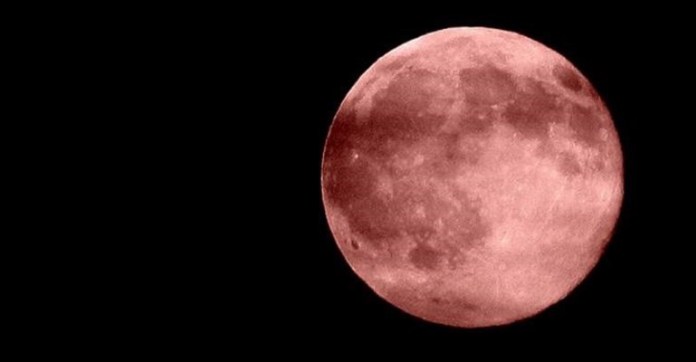Mozambique: GEF to disburse 4.8 million dollars for e-waste management
Strawberry Moon lunar eclipse of 2020 occurs today and can be viewed in Mozambique too

Skygazers are in for a visual treat, with lunar eclipse set to appear today. The phenomenon can be viewed in most parts of Asia, Europe, Africa, Australia, South America, Pacific, Indian Ocean and Antartica. Astronomers across the world have termed today’s lunar eclipse as ‘Strawberry Moon Eclipse’.
The penumbral lunar eclipse – when the Sun, Earth and Moon are almost aligned – will be visible in Mozambique from early on Friday evening.
This astronomical phenomenon, in which some sunlight is prevented from reaching the Moon, which will be in the so-called penumbra zone, will last from 7:45 p.m. until 11:03 p.m., with the peak expected at 9:24 p.m., and will be observable to the naked eye.
According to the National Institute of Meteorology, three more eclipses will be observable in Mozambique during 2020. On the 21st of June, a partial annular solar eclipse will be observable throughout the national territory and, on the 5th of July, a second penumbral lunar eclipse will occur.

Tonight, the Earth will block the sun’s light from reaching the moon’s surface and covers a part of the moon with its outer shadow, marking the presence of an Eclipse. This time, the moon is going to experience the penumbra eclipse and it is now denoted as a Strawberry Moon Eclipse. A penumbra eclipse is considered to be dimmer and fainter than the dark core of the Earth’s shadow. This makes it hard for a viewer to tell it apart from a normal full moon. A Strawberry Moon Eclipse happens when the moon passes into the earth’s penumbra, and this year it is expected to pass through 57 per cent of it. Here is all you need to know about what time the Lunar Eclipse is tonight in South Africa.
Lunar Eclipse time in detail
According to the live data provided by the TimeAndDate.com, the moon will travel through the faint penumbral portion of Earth’s shadow from today i.e. June 5. The total duration of the Moon Eclipse is 3 hours 18 minutes and it will appear on June 5, 2020, at 19:45 PM CAT till 23:04 PM CAT. According to the reports, the maximum eclipse will be visible on June 5, 21:24 PM CAT.
Can we see the penumbral lunar eclipse?
A penumbral lunar eclipse can be a bit hard to see as the shadowed part is only a little bit fainter than the rest of the Moon, as per the site. The reports have revealed that the moon is going to appear Strawberry-like and the earth’s shadow will only cover 57 per cent of the moon. It is safe to observe a lunar eclipse with naked eyes, unlike viewing a solar eclipse.
What is the Strawberry Moon?
Despite its name, the moon won’t be turning a hue of strawberry red, and the ‘Strawberry Moon’ tag is simply applied to the full Moon in June or the last full Moon of Spring.
That’s because in recent years, traditional Native American names for the full moons have become more common in modern day parlance.
According to the Maine Farmer’s Almanac – which first published the Native American names for the full Moons in the 1930’s – the name comes from the relatively short season for harvesting strawberries in northeastern North America.
The same full moon went under many other traditional names in other parts of the world, and one old European name for June’s was the ‘Honey Moon’; it’s believed that this is where the term ‘honeymoon’ may have come from.
The marital phrase dates back to at least the 1500’s, and it’s thought it sprang up due to the custom of marrying in June, and the fact the Honey Moon will have been in the sky around the time of a lot of nuptials.
Will the moon be red?
The traditional Native American name for June’s full moon suggests it may be turning a shade of red, but surely that’s not the case?
At higher latitudes, though the moon won’t be as colourful as ripe strawberry, it may actually change colour slightly – though the UK is far too south to see this effect.
The Moon orbits around the Earth on almost the exact same plane as the Earth orbits around the Sun. That means that when the Sun appears highest in the sky near the summer solstice in June, the full Moon opposite our nearest star is generally at its lowest in the sky.
At Europe’s higher latitudes, this means the full Moon shines through more atmosphere than at other times of the year, which can sometimes give it a reddish tint; it’s the same science that makes sunsets and sunrises appear a deep shade of red.












Leave a Reply
Be the First to Comment!
You must be logged in to post a comment.
You must be logged in to post a comment.